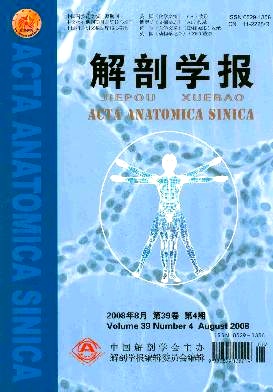|
|
ULTRASTRUCTURE ANALYSIS OF HUMAN NEURAL STEM CELLS/PROGENITORS CULTIVATED EM>IN VITRO/EM>
2008, 39 (5):
615-619.
doi:
Objective Neural stem cells have become a major concern in the current research of neuroscience, for they are involved in the neural injuries and recoveries, the origin of neural tumors, as well as other fields. The study on their ultrastructures, which is still limited at present, is indispensible. To offer more information is the aim of this paper. Methods Neural stem cells/progenitors from human fetal brain tissue were cultivated EM>in vitro/EM> and observed under a scanning electron microscope (SEM) and a transmission electron microscope (TEM). Results Neural stem cells/progenitors presented to be neurospherelike after days of culture EM>in vitro/EM>. The neruospheres were made up of neural stem cells/progenitors and nonfixiform material inside, and cells in neruospheres could be divided into lucent and dark ones according to electron densities. Between adjacent cells as well as on the cytoplasmic sides of the apposed plasma membranes, there were vesiclelike structures. Cell membrane fusions were also observed between some adjacent cells. Single neural stem cell /progenitor was spherical with rough surface under SEM. Many kinds of organellas, e.g. Golgi’s complex and endocytoplasmic reticulum, were underdeveloped in neural stem cells/progenitors, which generally had big, nuclei and scanty cytoplasm. The numbers, types and maturities of cellular organs in different cells were not always identical, which showed their heterogeneities. For instance, both neurofilaments and microtubules could only be observed in a few neural stem cells/progenitors; lysosomes were very abundant in some, but even hardly founded in others. What’s more, autophagosomes at different stages and in differernt formations could be seen in most cells. The nuclei, frenquently containing huge amounts of euchromatin and a small quantity of heterochromatin, mostly were globular, sometimes reniform or lobulated; most neural stem cells/progenitors had only one chromatospherite, seldom two or more, and sometimes no obvious chromatospherite could be seen. Conclusion Developed autophagosomes, vesiclelike structures between adjacent cells as well as on the cytoplasmic sides of the apposed plasma membranes and cellular membrane fusions could be seen in the human embryooriginated neural stem cells/progenitors and
Related Articles |
Metrics
|


